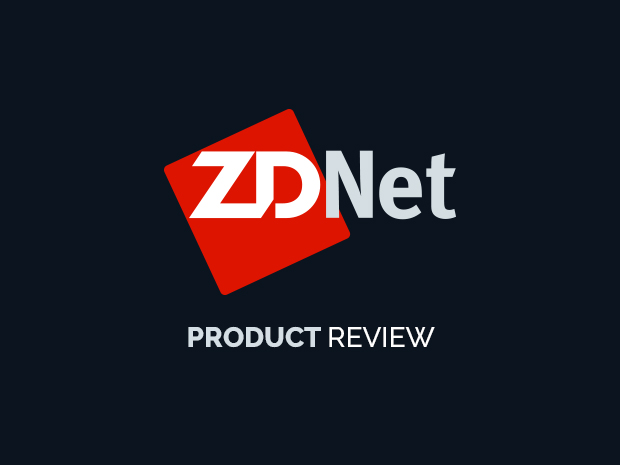'ZDNET Recommends': What exactly does it mean?
ZDNET's recommendations are based on many hours of testing, research, and comparison shopping. We gather data from the best available sources, including vendor and retailer listings as well as other relevant and independent reviews sites. And we pore over customer reviews to find out what matters to real people who already own and use the products and services we’re assessing.
When you click through from our site to a retailer and buy a product or service, we may earn affiliate commissions. This helps support our work, but does not affect what we cover or how, and it does not affect the price you pay. Neither ZDNET nor the author are compensated for these independent reviews. Indeed, we follow strict guidelines that ensure our editorial content is never influenced by advertisers.
ZDNET's editorial team writes on behalf of you, our reader. Our goal is to deliver the most accurate information and the most knowledgeable advice possible in order to help you make smarter buying decisions on tech gear and a wide array of products and services. Our editors thoroughly review and fact-check every article to ensure that our content meets the highest standards. If we have made an error or published misleading information, we will correct or clarify the article. If you see inaccuracies in our content, please report the mistake via this form.
InFocus LP640


InFocus LP640
pros and cons
- Editors' review
- Specs
The InFocus LP640 is an attractive, modern looking projector with a curved design and grey and silver exterior. Weighing 3.4kg, the LP640 should not be too much of a burden for short journeys. However, those looking for a more portable projector might want to look at the lightweight LP120. The LP640 model measures a considerable 29.4cm wide by 26cm deep by 10.3cm high. InFocus provide a carry bag that slings over your shoulder to aid portability but there is no handle on the unit itself. The supplied soft bag has a pouch at the front that stores the supplied cables and accessories. Thin padding lines the main pocket of the bag -- which accommodates the projector -- but we fear it is too flimsy to withstand a considerable knock or drop.
It takes 20 seconds for the lamp to warm up after which the projector searches automatically for a signal from a computer or video source. After this, the LP640's lamp comes into full effect beaming intense images at a rating of 2200 lumens. Combining this strength in brightness with the projector's native 1024 x 768 (XGA) resolution, images are bright and crisp -- except when sunlight is flooding through a window. Surrounding the lens of the LP640 are easily adjustable zoom and focus rings to alter your picture.
InFocus specify the throw range to be 1.5m to 10m, but we noticed the screen door effect kicking in at distances greater than 5m. While the projected image is certainly bright, the somewhat low contrast ratio of 400:1 leaves blacks looking slightly grey; not the best if you have hopes of projecting stunning home theatre. However, the LP640 is pitched as a meeting room projector so a high level of brightness rather than contrast is probably more beneficial in office environments, which are mostly lit up more than living/theatre rooms.
During operation, we found the fan cooling the lamp whirls along constantly, but it shouldn't pose a distraction during presentations. Pressing the power button twice initiates the shut down procedure but it takes two full minutes for the fan to cool down the lamp sufficiently before switching off. A countdown sequence appears on the display panel for both warm up and cool down times; usually, it displays a text description of the current input source.
At the back of the LP640 are all of the connectors -- it pretty much supports anything you could want to hook up. There are two computer inputs (M1-DA and VESA) with a 3.5mm stereo audio input. One of the supplied cables also has a USB connection; so you can control presentations on the computer via the projector's remote control. The other video inputs are S-Video and composite RCA (with RCA stereo audio input alongside). If you're presenting or playing back any kind of multimedia content involving audio, it's probably best to connect the audio up to speakers with more oomph than the LP640's inbuilt speaker. An RJ-45 Ethernet connector allows networked control of the projector through ProjectorNet (links for which are found on the accompanying CD). You can also control the LP640 via serial connection and RS-232 commands are on the InFocus Web site.
The life of the 170 Watt lamp is rated at 2000 hours and a timer counting its total usage appears under the About option in the projector's menu. Fifty hours before the specified end of the lamp's life, a message reminding you to replace the lamp appears briefly at start up. Replacing the lamp is simple enough, one screw holds a cover in place and two screws surround the bulb. At AU$550 a bulb, operating cost is about 28 cents per hour.
Adjusting the height of the projector involves releasing an elevation foot at the front and a levelling foot rotates out of the back right-hand corner. If the image is tilted, the digital keystone can be tweaked though the projector or via the remote control to make it square.
The remote control duplicates the main body buttons of the LP640 and adds a couple of features of its own. Previous and Next buttons on the remote control assist with navigating through presentations on a computer when the USB cable is connected. In addition, a user-defined Effect button performs functions such as zoom, freeze, or picture in picture overlay. Remote operation is preferable not only for the freedom factor, but the buttons on the projector itself tend to stick down and need a flick to pop back up.
Top ZDNET Reviews
Further enhancing the projector's mobility is the optional LiteShow wireless module (AU$1299). Connecting to a computer input source on the back of the projector, the LiteShow wireless adapter communicates with nearby computers connected to wireless LAN adapters using the 802.11b standard (Wi-Fi). The LiteShow Manager software projects the display from your wireless-enabled computer to the LP640. During our tests, we achieved real-time mouse cursor control and almost instant response but we found a couple of seconds delay in projecting intricate images and slides over the wireless link. When using the wireless module with the LiteShow Manager, DVD video played on our notebook would not display on the projector at all. This may have been due to the existing nearby wireless networks interfering with and degrading our connection however; if you can muster up enough bandwidth wirelessly it's theoretically possible.
Retailing at a competitive AU$5,999, the LP640 is a powerfully bright projector that would be a welcome addition to most boardrooms. Home theatre buffs might want to check out the attractively priced Epson EMP-S1.
InFocus LP640
Company: InFocus
Price: AU$5,999
Distributor: Selected resellers